

A man protects himself from the rain caused by the hurricane "Patricia" in Ameca, Jalisco state, Mexico, on Oct. 23, 2015. An hour after Hurricane Patricia made landfall Friday evening in the Mexican state of Jalisco, bringing strong winds and heavy rain over the west of the country, it was downgraded to a Category 4 hurricane. (Xinhua/Pedro Mera)
An hour after Hurricane Patricia made landfall Friday evening in the Mexican state of Jalisco, bringing strong winds and heavy rain over the west of the country, it was downgraded to a Category 4 hurricane.
Patricia was previously Category 5, the highest on the Saffir-Simpson scale of hurricane intensity, and considered to be one of the strongest hurricanes ever recorded.
The winds were swirling in a relatively small radius of five to 10 miles (eight to 16 km) out from the eye of the storm, but were likely to have a devastating effect, with maximum sustained speed of 335 km per hour.Meteorologists later reported a slight slowdown in wind speed to 305 km per hour shortly before Patricia made landfall.
The Mexican national meteorological service said that by 10 p.m. local time (0300 GMT Saturday), the hurricane could be further downgraded to Category 3 as it weakened over mountainous areas. By Saturday, as it continues to move over land, it may be downgraded to a tropical storm.
However, authorities warned that the storm's weakening did not mean that the danger was over.
Ricardo de la Cruz, director general of civil protection at the Secretariat of Governance, said the states of Jalisco and Colima remained on high alert.
Furthermore, he warned that, as the hurricane slowed down, more rain would be concentrated on certain areas, increasing the danger of floods and landslides.
Around 5:30 p.m. local time (2230 GMT), the first damage was registered along the Pacific coasts of the states of Jalisco and Colima, where sit the popular holiday resort resort of Puerto Vallarta and the major port of Manzanillo, with billboards and trees being toppled by strong wind and heavy rain.
Porfirio Mendoza Zambrano, mayor of the municipality of Coahuayana in the state of Michoacan, told Mexico's Notimex news agency that his town had seen landslides and roofs being torn off houses.
Villages surrounding the Colima volcano have also been evacuated in recent hours, since authorities fear ashes spewed by the volcano since its eruption in early October might cause major landslides.
The Mexican authorities had evacuated more than 50,000 people by Friday afternoon before the hurricane's landfall and advised residents and tourists to leave the areas.
It is estimated more than 400,000 people remained in the affected areas.
Mexican President Enrique Pena Nieto dispatched 5,000 soldiers, 4,000 sailors and 400 federal police officers to the areas to help with evacuation efforts.
 |
Day|Week

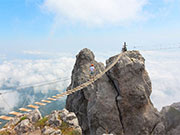 World's most heart-pounding bridges
World's most heart-pounding bridges First Glass Suspension Bridge in China Opens to Visitors
First Glass Suspension Bridge in China Opens to Visitors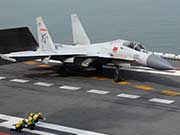 In pics: J-15 Carrier-Based Fighter takes off from Liaoning aircraft carrier
In pics: J-15 Carrier-Based Fighter takes off from Liaoning aircraft carrier In pics: army beauties across world
In pics: army beauties across world Air stewardesses packed into overhead bin
Air stewardesses packed into overhead bin China enters Go Away, Mr. Tumor for 88th Oscars
China enters Go Away, Mr. Tumor for 88th Oscars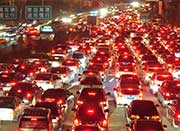 Highlights of the National Day holiday
Highlights of the National Day holiday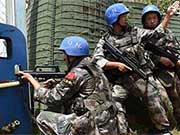 Chinese peacekeeping forces in South Sudan encounter armed conflicts
Chinese peacekeeping forces in South Sudan encounter armed conflicts "Luxury" art apples debut in Shanghai
"Luxury" art apples debut in Shanghai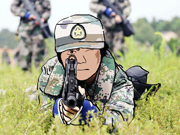 Photos and hand-painted pictures brighten the military training life
Photos and hand-painted pictures brighten the military training life